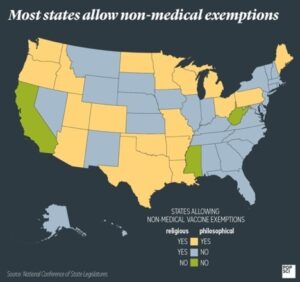Oregon State Legislature sent this bulletin Tuesday, March 21, 2017 by devadmin
If a Democrat House member gets his way, the Oregon Water Resources Department (OWRD) will load stiff economic, land and water management problems right into the lap of Oregon’s farmers, ranchers, cattle and dairymen.
All water right holders will find themselves in a swamp-like slough of muddy ground composed of fees, regulatory efforts and exceedingly stiff fines – up to $500 per day. All of these water bills (HB2705, HB2706, HB2707) enlarge government efforts through needless regulation and direct intervention in land and water use.
The happy story masking each of these bills is beneficence, but they really promote a future that is nothing-less-than a government controlled Utopian vision.
Look at the language in HB2705, the Legislative Assembly declares that:
“(a) Water use data is a fundamental tool to ensure efficient management, ensure effective water distribution and help plan for future water needs; and (b) The measurement and reporting of water use benefits all water appropriators and is critical to the effective management of the water resources of this state.”
There is nothing, necessarily, wrong with any of these statements, but the question remains, who will be controlling, cataloging, regulating and managing? And finally, who will be benefiting and how?
All of these things sound perfectly wondrous, so let’s continue reading. The next section of HB2705 shines some light on the details. It reads:
“It is the policy of this state to: (a) Actively promote measurement and reporting of water use by water appropriators; and (b) Encourage federal, state and local government coordination and cooperation in providing financial support to water appropriators for water use measurement and reporting.”
This is top-notch deception.
The phrase “to promote” would not mean “to force”, would it?
That is what the bill requires – force. Why doesn’t the legislation inform the public of this fact? In all honesty the text should read, “(a) Actively force measurement and reporting of water use by water appropriators,” because that is what it does.
Additionally, in the next sub-section, the phrase “encouraging” is nothing but legislative live-bait to make this design sound helpful. There are no details about funding, or financial support anywhere in this bill. It only shows up in the preamble to assure stakeholders that OWRD could be reasonable.
Over the years, Americans, and particularly Oregonians, have been slowly acclimated to similar Utopian visions. We have been led to believe that by some government action this improvement could be made; or by some government sponsored innovation this would be better, or with these regulations some version of effective management could be accomplished.
We are continually told that with some commission, study, or with a little more data the government could improve the conditions of your life, nursery, farm or ranching operation. Over the years these socialist policies have been universally painted with glorious sounding titles – a Square Deal, a New Freedom, a New Deal, a Fair Deal, a New Frontier, and a Great Society.
Now, we are being led to believe that government will “ensure efficient management, ensure effective water distribution and help plan for future water needs.” That language is directly from HB2705.
The truth is, this government entity knows what it doesn’t know. The plan is to force you into providing it. The state doesn’t have any intimate knowledge of your farm, ranch, or agricultural operation and therefore, they can’t easily control or regulate it. But, they hope to control and regulate you.
HB 2705 will force you to provide them with the necessary details and the Water Resources Commission will set the rules which you will be required to follow.
The user or water appropriator does all of the work and bears all of the costs. Remember, in legislative legalese, the word “shall” means “must.” The text reads:
SECTION 3:
(1) A water appropriator shall…
(2) A water appropriator shall…
SECTION 4:
(1) A water appropriator shall…
(2) A water appropriator shall…
However, OWRD is responsible for one thing – issuing fines:
“SECTION 5. The Water Resources Department may assess a civil penalty for violation of section 3 or 4 of this 2017 Act, not to exceed $500. For a continuing violation, each day the violation continues is a separate violation.”
Welcome to OWRD’s vision for your Utopian future…
It should be obvious that these bills were crafted without the critical engagement of impacted water users and stakeholders. These bills don’t offer any benefits to Oregon or the typical water user in my District.
These bills will impose significant costs on already struggling farm, ranch and ag families and the collected monies are not allocated toward meaningful areas of need.
What to do…
I urge water right holders to e-Mail, write, or call, each member of the House Energy & Environment Committee to share their thoughts and suggestions.
The best way to make an impact is to attend the hearing in-person:
March 22nd, 2017 – Wednesday
Hearing Room-D, at 3:00 p.m.
Salem Capital Building
900 Court St. NE
Salem, OR 97301
It is important that you send your statements to each member of the committee. Also, please send your statement to the committee, as an official part of the record. Written, or e-Mailed testimony must be submitted prior to the hearing. Please state at the top whether you are for or against the bills and share your reasons why.
Rep. Reschke serves on the House Energy & Environment committee and has stated his opposition to these bills. Please notify his office if you are planning to attend.
Copies of these bills can be found on the Oregon Legislative Information System (OLIS) at these links:
HB2705
HB2706
HB2707
Please join me in opposition to these bills. They will be heard this Wednesday, March 22, 2017, in the House. These bills may move to the Senate following their House hearing. If you happen to read this article after the March 22, 2017 meeting, please write to your Senator to voice your opinion on these burdensome bills.
If we don’t stand for rural Oregon values and common-sense – No one will…
State Senator Dennis Linthicum
District 28




















